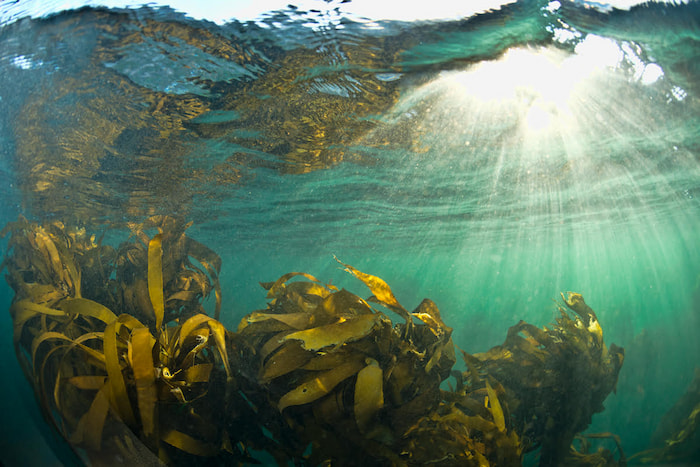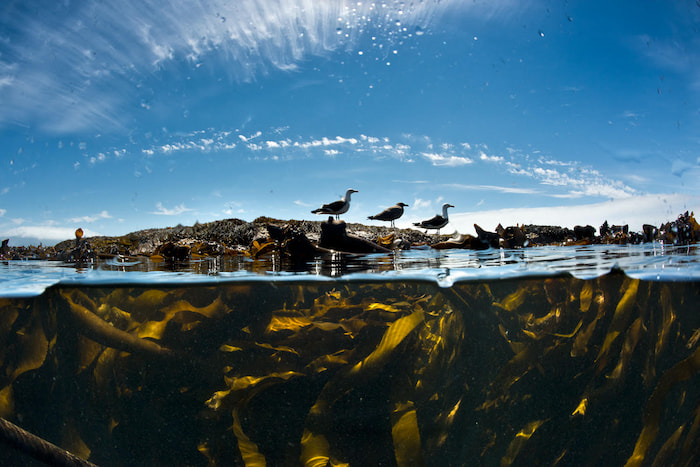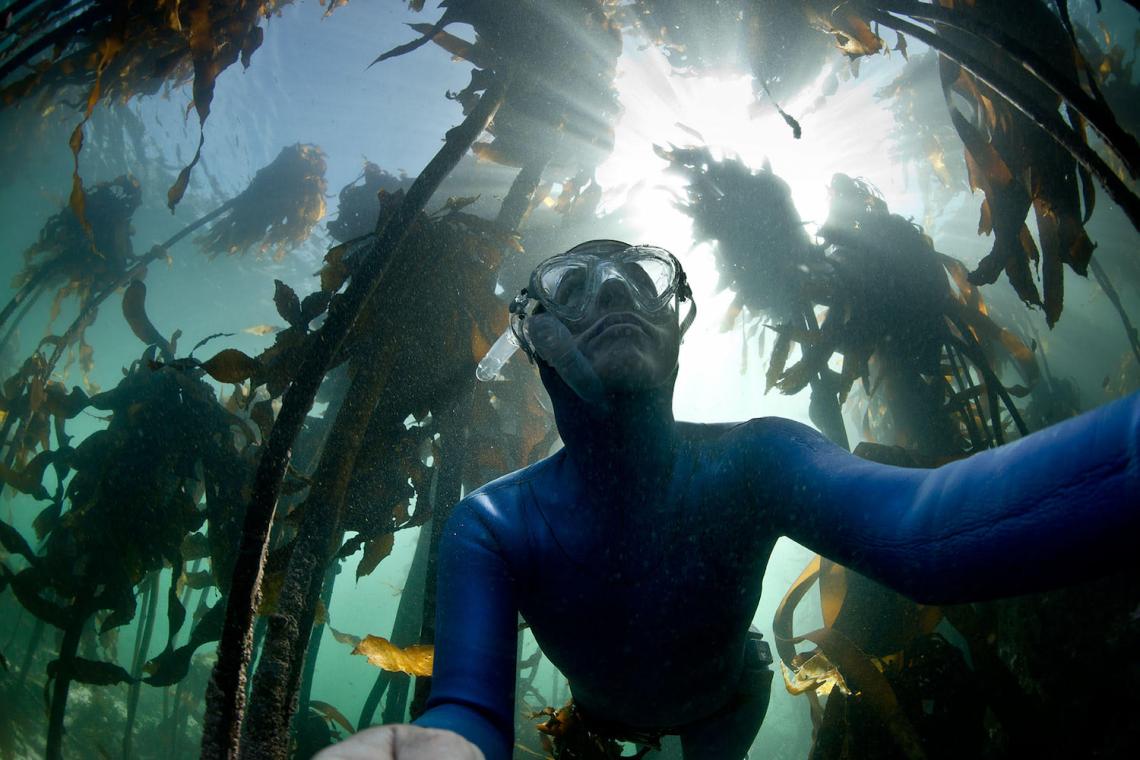South Africa is known for many natural attractions and boasts an impressive list of things to see. Tourists come from far and wide to see the Big Five safari animals, Cape Town's beautiful Table Mountain, African penguins, and much more. However, this area offers much more than what initially meets the eye. Sometimes the most incredible feats of nature lie just below the surface…or perhaps just poking through the surface.
While some may not find the kelp forests as flashy as some of South Africa’s other wonders, they deserve recognition for many reasons. Kelp ecosystems are comparable to that of coral reefs and mangroves because of the abundant life that they sustain. They act as a nursery for juvenile marine life and are an abundant food source for animals such as urchins, abalone and snails. Humans can even eat it too!

During my Wildlife Conservation and Photojournalism Internship with Lesley Rochat, co-owner of Shark Warrior Adventures and founder of AfriOceans Conservation Alliance, I visited the Two Oceans Aquarium in Cape Town. While I was there, I got to see the massive kelp forest tank. Since kelp can grow up to 53 meters (175 ft) tall under the surface, it requires quite a large space in the aquarium to offer an impressive display.
I listened to a fascinating talk by one of the employees, Zoey, who told us: “Kelp is a keystone species, meaning that without them, this coastal ecosystem would collapse. As the oceans warm due to climate change, these forests and the delicate biodiversity they support are under threat.” While further explaining the abundant marine diversity of Cape Town, I watched the fish swim in the tank behind her. I spotted the national fish of South Africa, the galjoen, a mid-sized, grey-coloured fish with a symmetrical dorsal and anal fin giving it a distinctive ‘Snapchat logo’ shape, especially noticeable when they raise their spines in defence. Spotted gully sharks and red stumpnose, among many other species, weaved through the long kelp fronds, gently swaying in the artificially created current, which kelp requires to survive. This magical forest is not only home to many species. Zooey explained that they are a water cleaning system; they purify the water by removing waste left behind by marine organisms.

After I visited the aquarium, I was captivated by the kelp forest and needed to experience it even closer, which I did the next day – my classmates and I went on a kelp forest snorkelling safari led by Lesley. Only then did I fully understand what Zoey talked about: the kelp stalks are incredibly strong, keeping their holdfasts anchored on the sea floor. We could even grab onto them when we tried some breath-hold diving - I don’t usually think of algae being so strong!
Kelp I learnt is beyond incredible, and I’m not the only one who thinks so – Terry Corr, co-owner of Shark Warrior Adventures and the head of AfriOceans education, told me how kelp can be used as a food source in place of sardines, the populations of which is slowly diminishing along the coast of South Africa. Unfortunately, as the sardine numbers drop each year, it severely affects the African penguins, who depend on sardines as their primary food source. Sardines are often caught for livestock feed since they are a cheap nutrient source. Terry explained: “Kelp actually has omega-3 richness that sardines have, among many other nutrients, and is a fantastic alternative to sardines.” While kelp is already being used in livestock feed, it has a way to replace the use of sardines.
I investigated this further and found an article in the New York Times stating that most of our small fish foraging isn’t for human consumption but rather for animal feed and feed in the aquaculture industry. Essentially, humans are robbing one species of food to feed another, and in so doing, we are upsetting the delicate marine ecosystems.
A further reason to turn more to kelp harvesting is raised in an article published in the Agriculture and Food Security journal about the pelagic industry on the west coast of South Africa, which is made up of 60-90% sardine catches. There have already been two collapses in this fishery in the '60s and ‘90s and one in the early 2000s due to changes in the southern Benguela current that drives these fish. So, imagine if fishermen are having difficulty finding these little guys in large numbers. How difficult it is for the penguins to find enough to feed their hatchlings –no wonder they are under such severe threat. And that’s precisely where kelp comes in as a much more sustainable alternative.

Kelp is an abundant, fast-growing, and stable resource not only in South Africa but also in dense kelp forests in other parts of the world, like California, Alaska, and northern Europe, to name a few. One thing that all these locations have in common is cold water systems. This brings me back to what Zoey told us about climate change and how warming seas threaten these ocean forests since kelp thrives only in cold, nutrient-rich waters around 6-14°C (48 - 57°F).
There are so many daunting problems facing the precious African penguins, the kelp forests, our oceans and our environments in general, and I am left to wonder how I can make a difference. I am reminded that each little bit adds up to a big one in the end: we might not be able to harvest kelp and turn it into pig fodder or stop climate change on our own, but we can reuse, recycle and help local nonprofit organisations by participating in local beach/waterway cleanups. Reducing our carbon footprint is another crucial way to slow global warming, which can be done by buying locally-made food, biking or walking rather than driving. If one must drive, then try to carpool or use public transportation, to mention a few things we can do - we can all lend a kelp-ing hand to save our blue planet!
If you want to read more about the kelp forests at Two Oceans Aquarium, click here.
This article was published as part of the Wildlife Conservation and Photojournalism Internship with Lesley Rochat, co-owner of Shark Warrior Adventures and founder of AfriOceans Conservation Alliance.
All Photos by Lesley Rochat


